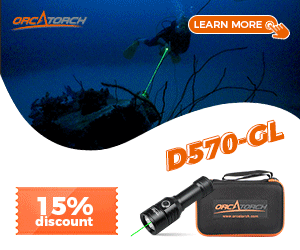tphelps, Could you please please share with me the source of you data regarding ocean temps in the summer of 2016. I cant find any of my friends here in Kona, including a dive shop owner and a professional underwater photographer (this guy dives the west side several times a week)who agree with your statement of 86 degree temps for that summer. Did you mean to say the summer of 2015? Everyone here remembers the 86 degree temps for that year but not in 2016. Can you help clear this up? Both my friends an I would be interested in seeing your data.
I am confirming with my collaborator who had the temp sensor data and will post when I hear back. You might be correct. I remember 2015 was Hot! Hot! Hot!, and 2016 was cooler, but not by much to my recollection.
In the meantime, here is a manuscript from the study I was part of that just got published last week. This is the first chapter of Cori's PhD and it mostly discusses distribution by depth and not temperature. But should still be an interesting read. If you don't read scientific papers in marine science frequently, I recommend starting with the Abstract and Discussion first
 Trophic designation and live coral cover predict changes in reef-fish community structure along a shallow to mesophotic gradient in Hawaii
Trophic designation and live coral cover predict changes in reef-fish community structure along a shallow to mesophotic gradient in Hawaii
I agree that the Manta Ray night dive is a great experience...I've done it twice. I must ask you, as a "Marine Scientist", are you at all bothered by this aquarium show type enterprise. It is somewhat similar to the shark feeding shows done in the Caribbean. The main difference here is that he bait is attracted with huge lights instead of being brought to the site by the dive operators. I guess this bothers me some but ....obviously not enough to miss the show.
I am much more comfortable with this type of feeding than baiting like in other shark dives. From what I've seen it has minimal impact on the animals themselves whereas baited dives have shown to effect the behavior of the animals (like sharks). In some parts of the Caribbean, and even in Kona, I have had sharks become
very interested in me because they associate divers with food in these feeding areas. Mantas are different because they are planktivores, and it's not like dive shops are bringing down massive tubes of plankton to feed them (which would be hilarious). They are attracted to Garden Eel cove due to the upwelling at this site that bringing up nutrients and zooplankton. The lights that we use only draw them in to us on site. No upwelling, no mantas. Which is why there are plenty of nights where divers do not see mantas. Whereas in these feeding sites, you almost always see sharks because it alters their behavior and they are attracted to the food. Mantas are not attracted to the lights. That's why if you see one in the day time, good luck getting close to it.
^To preemptively answer your question. There have been some instances of divers/operators chumming the waters at Honokohau to attract tiger sharks. Baaaaaaaaaad idea! DOCARE and DLNR are aware of this and started patrolling the area more to catch this. The community also realized how serious this was. Rumor got out of who these individuals were and all operations agreed not fill their cylinders or support these individuals.
I am in Kona right now. Nobody I know here goes diving on the Hilo side. Where is a good spot to check it out?
Wai'olena Beach Park (aka Leleiwi) before you get to Richardson's Ocean Park is a cool spot when conditions allow. The easiest entry is here (19.733220, -155.017700 - type in Google Maps). Park in the parking lot directly east and you can access the entry by walking across the grass where the pavilions are and you'll see some small steps. Carefully on the lava rock as it can be slippery. I'd swim straight out and hang out in the 30-40ft zone, lots of sea turtles if you catch them at a good time. There is a bathroom east of the parking lot along the water that is accessible
If Wai'olena isn't diveable, Puhi Bay is 364 days a year. next to UH's aquaculture facility. (19.731568, -155.045941) It's shallower, calmer, with lots of entry points. If you head directly out and make your way around the right side, there's a large arch you can swim through with usually a few turtles hanging out around. If you Google those coordinates, those satellite images were taken during the summer because there are not that many white canopies. There also must have been a lot of people which is why it's a bit whited-out and distorted. But you can park a long the side there. Don't park in the small parking lot next to the port-a-potties as it is privately owned by a church and you might get a few looks, also the port-a-potties are locked so plan a-"head" (get it?).
There are fresh water showers at both sites you can use to rinse off gear. If you decide to go, you can rent gear/cylinders from Hilo Ocean Adventures or Nautilus Dive Center. It would an interesting comparison for you and your buddies to see how the corals look in comparison to Kona. Spoiler: I think they look healthier.
Thanks TPhelps! You the man...... I knew you would chime in.
You know it Gabe!




